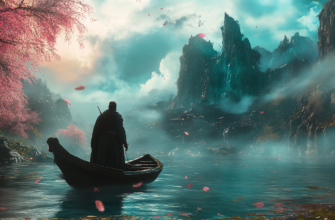- The evolution of the quest genre: From text-based to modern adventure games
- The infancy of gaming: text-based adventures
- Colossal Cave Adventure
- Zork’s rise to fame
- The graphical leap: Sierra’s adventure games
- King’s Quest: A revolution in gaming
- Space Quest and Police Quest pioneers
- The LucasArts revolution: point-and-click comes to life
- The Monkey Island series
- The rise of Full Throttle and Grim Fandango
- The decline and revival: the quest genre’s fall and rise
- TellTale’s impact: The Walking Dead
- Current quest games: a new consistency
- Practical tips for enjoying modern quest games
- Conclusion: long live the quest genre!
The evolution of the quest genre: From text-based to modern adventure games
Hey, fellow gamers! Today, we’re delving into something super cool—an adventure world that has witnessed some crazy transformations over the years: the quest genre. From text-based classics to the grand narrative masterpieces of today, quests have long been a gaming cornerstone, compelling players to solve puzzles, unlock doors, and experience gripping stories from beginning to end. Grab your favorite gaming snack and get comfy. Let’s break down the history of the quest genre and how it evolved into what we love today.
The infancy of gaming: text-based adventures
Back in the day—way back before shiny 3D graphics and dynamic soundtracks—gaming was all about imagination. Enter text-based adventures, the origins of the quest genre. The emphasis was on storytelling, with everything presented through written descriptions. You had to visualize everything from characters to settings. Sounds boring? Nope! These games sparked the imagination in ways that modern games sometimes struggle to recreate.
Colossal Cave Adventure
In 1976, Colossal Cave Adventure opened up a new world of possibilities, quite literally. This was one of the very first text-based games where players explored caves and solved puzzles. You typed commands like “go north” or “take lantern,” and boy, did it test your problem-solving skills. The game was a huge inspiration for what would become the modern quest genre.
Zork’s rise to fame
Fast forward a few years, and another legend emerged in 1977: Zork. This game took what Colossal Cave Adventure started and amped it up. Zork entered the mainstream with its humorous tone and intricate puzzles. The depth of its text-driven world motivated players to explore, solve puzzles, and interact with creatures through simple text commands. The legendary status of Zork basically solidified text-based quests as a beloved genre in the 80s.
The graphical leap: Sierra’s adventure games
Fast-forward again to the early 80s, and graphics finally started to creep their way into games. Developers realized visual elements could complement storytelling. Cue Sierra, one of the biggest names to bring quest games into the visual age.
King’s Quest: A revolution in gaming
Released in 1984, King’s Quest by Sierra was a game-changer (literally). As one of the first graphical adventure games, it took players out of the imagination-based text world into a fully visual fantasy land. But it didn’t abandon its roots—players still had to type commands like “pick up sword,” but now you could see the sword! Sierra combined narrative, puzzle-solving, and visuals in a new way, evolving the quest-gaming experience.
Space Quest and Police Quest pioneers
Sierra didn’t stop there. They branched out with other classic titles like Space Quest and Police Quest, each bringing a blend of humor, puzzles, and an engaging interactive world. The point-and-click interface of these games allowed gamers to combine their love for story with their growing craving for better visuals, setting the stage for modern adventures.
The LucasArts revolution: point-and-click comes to life
Sierra wasn’t the only player when it came to quest games. Enter LucasArts, a new heavyweight contender famous for its unique approach to adventure gaming. LucasArts didn’t just throw you puzzles; they gave you charm, humor, and out-of-this-world narratives.
The Monkey Island series
Look, if you’re talking 90s adventure games, you simply cannot leave out The Secret of Monkey Island. Launched in 1990, it remains an adventure classic that turned the genre on its head. LucasArts focused on simplifying controls by using their SCUMM engine, which gave us the revolutionary point-and-click interface.
Not only did Monkey Island nail humor, but it also introduced the concept of logical (and often hilarious) puzzle-solving. You weren’t stuck typing commands anymore; everything could be achieved with a click. This design delivered a more streamlined experience and exposed new players to adventure games.
The rise of Full Throttle and Grim Fandango
LucasArts carried their momentum through the 90s with more cinematic experiences like Full Throttle and the critically acclaimed Grim Fandango. These games took the design philosophies from earlier titles and integrated deep storytelling, better voice acting, and, in some cases, full 3D worlds. Grim Fandango, for example, became a cult classic for blending its noir storytelling with comedy, puzzles, and a unique art style.
The decline and revival: the quest genre’s fall and rise
So what happened? Why did adventure games fall off the map during the early 2000s? Simply put, the quest genre was overtaken by other gaming trends. First-person shooters and RPGs like The Elder Scrolls III: Morrowind and Half-Life swept in and captured a lot of what kept players glued to their screens—stunning graphics, immersion, action—and quests seemed old-fashioned for a while.
TellTale’s impact: The Walking Dead
But don’t worry; quest games didn’t stay down for long. In 2012, Telltale Games came along and revived the genre with an episodic storytelling approach. Their release of The Walking Dead was an absolute smash hit. It gracefully blended a narrative-forward adventure with bite-sized, emotionally gripping episodes, allowing players to make choices that had real in-game consequences. Unlike traditional puzzles, the focus was on choices, relationships, and an immersive story.
Current quest games: a new consistency
Thanks to Telltale and a resurgence in indie gaming, we’re now in a golden age for narrative adventures and quests. Games like Life is Strange, Oxenfree, and Firewatch remind us that personal stories and meaningful choices can be just as engaging—if not more so—than endless action. Today’s quest games often incorporate cinematic elements such as voice acting, advanced motion capture, and stunning visuals while still paying homage to the puzzle-solving roots of their predecessors.
Practical tips for enjoying modern quest games
Whether you’re diving into quest classics or exploring modern iterations, here are a few tips to elevate your experience:
- Patience is key: Many adventure games are built around puzzles, and some will stump you. Don’t get frustrated; walk away if you need to, and always look at the bigger picture.
- Immerse yourself: Focus on the story. Unlike action-packed shooters, quest games unfold slowly, so take your time and enjoy the narrative. It’s like getting engrossed in a good book.
- Keep notes: Old-school or not, some adventure games throw in subtle details that you’ll need to recall later. Jot down key clues or conversations—it’ll save you frustration later.
- Play with a friend: Some of the best moments in quest games happen when bouncing ideas off friends. Grab a buddy and solve the puzzles together.
Conclusion: long live the quest genre!
The quest genre has seen incredible transformations over the past few decades, starting from text-based adventure games that challenged our imaginations to the cinematic visual masterpieces we play today. Legends like King’s Quest and The Walking Dead have shown us that storytelling is still very much alive in gaming. The evolution of quest games has shaped the entire landscape of gaming and inspired other genres to experiment with narrative-focused experiences.
What’s the best way to appreciate this rich history? Go play a few games, man! Whether you pick a nostalgic classic like Zork or dive into something contemporary like Life is Strange, you’ll witness firsthand how far the genre of quests has come—and where it’s still going.
Have any favorite quest games or memories? Share them in the comments below, and let’s swap gaming stories!


















I have been exploring for a bit for any high-quality articles or blog posts on this sort of area . Exploring in Yahoo I at last stumbled upon this site. Reading this info So i am happy to convey that I’ve a very good uncanny feeling I discovered exactly what I needed. I most certainly will make certain to don’t forget this web site and give it a look on a constant basis.
Lovart sounds like a game-changer for creative workflows-imagine crafting posters with just a few sentences! I’ll definitely check out Lovart when it’s available.
Navigating the AI landscape just got easier with AIGO Tools. Their curation saves time and boosts productivity. Check out their AI Business Ideas Generator for smart inspiration.
Super Ace by Jili Games really blends luck and strategy well. The 1024 ways to win and free spins with multipliers are thrilling. If you’re curious, check out Super Ace Jili for more insights and tips on how to play smart.
Great insights! In today’s fast-paced digital world, having access to the right tools can make all the difference. I recently discovered Best AI Tools, which offers a curated list of AI solutions that are perfect for boosting productivity and creativity. It’s a game-changer for anyone serious about leveraging AI.
Understanding betting patterns in baccarat can significantly enhance your gameplay strategy. Platforms like Jili App offer diverse games and user-friendly experiences, making it easier for players to apply these insights effectively.